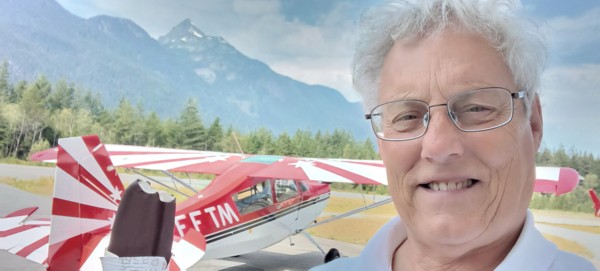
After aerobatics ice cream... It was Lucas's birthday so I bought some goodies for everybody.
Flying in British Columbia in August 2022
Super
Decathlon

After aerobatics ice cream... It was Lucas's birthday so I bought
some goodies for everybody.
In this life I have frequently flown aeroplanes I
have not flown for a few years, but having done many hours in
them their facets come back very quickly with the smell, the
location of controls and gauges, and their flight characteristics
well remembered.
Such was why I could get into the Cessna 152 and teach in it as
if I'd nver stopped doing so.
I can't teach aerobatics since my aerobatic instructor,
instructor rating has lapsed. Currently there is no-one local to
Vancouver approved to do aerobatic instructor tests.
I can coach someone who is already signed off to do aerobatics,
and so it was I flew with Lucas to polish up his slow rolls, and
to show him how to do these to the right.
It went very well, as if I'd never stopped doing slow rolls in
the Super Decathlon... I suppose that after a break your
concentration is that much more.
"Kelly tells me he can't do a spin entry as smooth as
you", Kelly had recommended me for spin training it seems...
So I demonstrated that smooth spin entry.
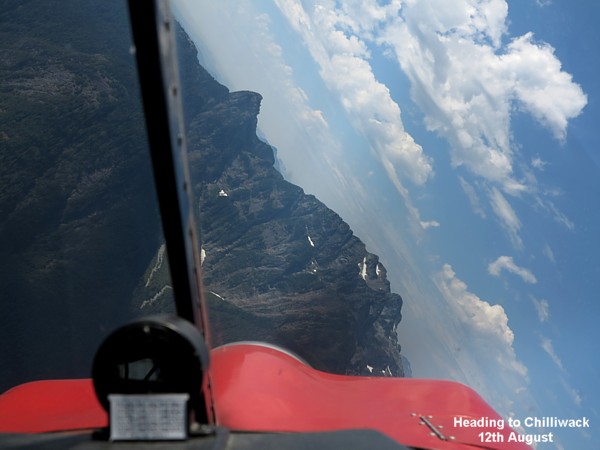
The Super Decathlon had to go for its Annual Check
'Picked up the Citabria from there for Glacier Air, and flew to
Boundary Bay to test fly:
The Katana 100
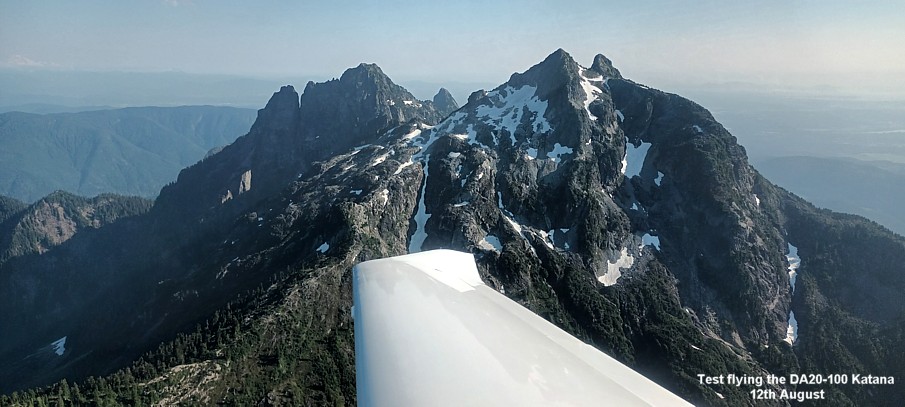
A privately owned Katana 100 was using excessive
amounts of oil and so I was asked to take it for a test flight. I
took Lucas along for the ride, and then he flew me back to
Squamish in the Citabria.
It was a very busy day.
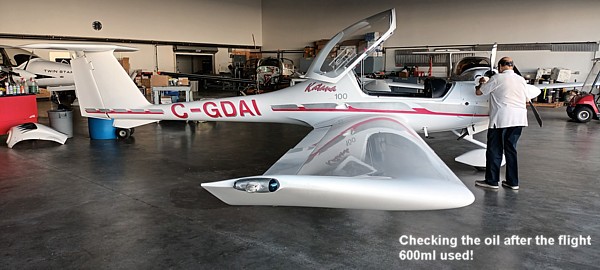
The Rotax 912S engine normally uses very little oil, top ups are
usually no more than 100ml a time.
The owner was told to use Avgas 100LL and Shell Sport 4 synthetic
oil.
This engine 'burped' in five turns of the
propeller which is quick. The school's Katanas can take 20 turns
to burp, you 'burp' a Rotax engine to check the oil level.
Turning the propeller increases the crankcase pressure to force
the oil into the oil tank. The suggestion is that blow by the
piston rings is too much in the test engine.
The school's Katanas never use much oil, but when we set up the
school (Sea Land Air Flight Centre) we bought a Tidy Tank and
used it to fuel the aeroplanes with Shell V Power Mogas.
Rotax specifies the use of unleaded Mogas (car fuel), and if you
use 100LL you need to change the oil more often, and not use
synthetic oil. 100LL gives an engine lead poisoning.
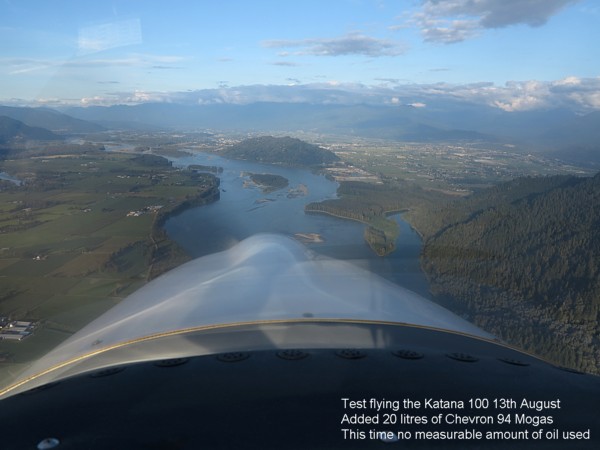
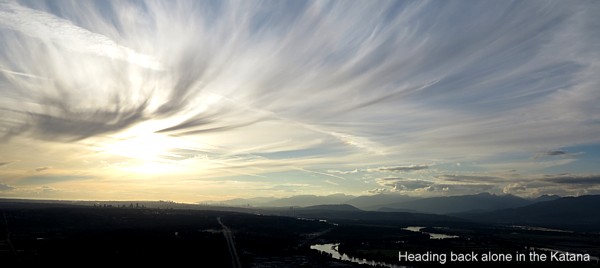
This flight and subsequent flights were made with Chevron 94
Mogas in the tank, and oil consumption dropped dramatically.
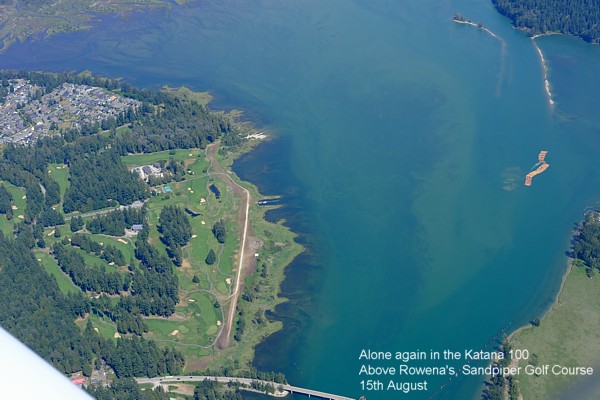
I repeated the flight I did on the 13th, as above, and then did a
second flight this day to 5,500 feet.
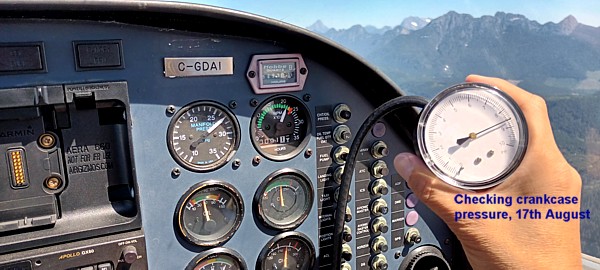
David came with me this time to check the crankcase pressure,
maximum 8lbs, went over 9lbs at high power.
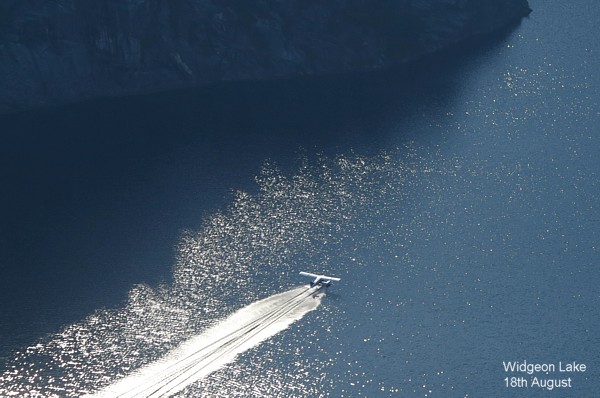
Solo testing with the crankcase pressure gauge.
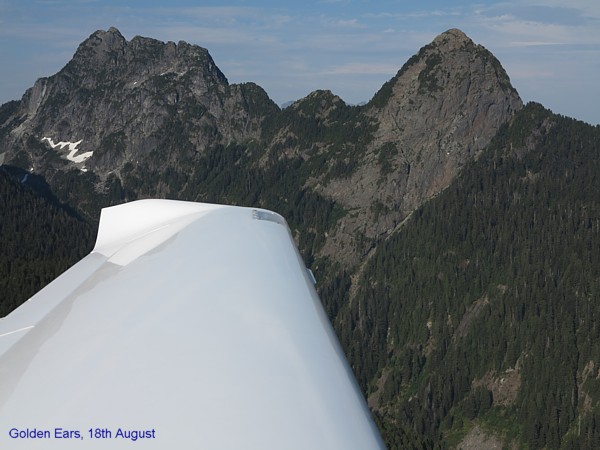
A final solo flight. I did over six hours flying to test this
engine.
The conclusion is that you should as much as
possible use Mogas or 91UL (unleaded) Avgas in your Rotax 912
engine. If you have to use 100LL, such as when you are refueling
at an aerodrome where only this fuel is available, then dilute it
as much as possible with unleaded petrol.
I did enjoy flying a Katana again.
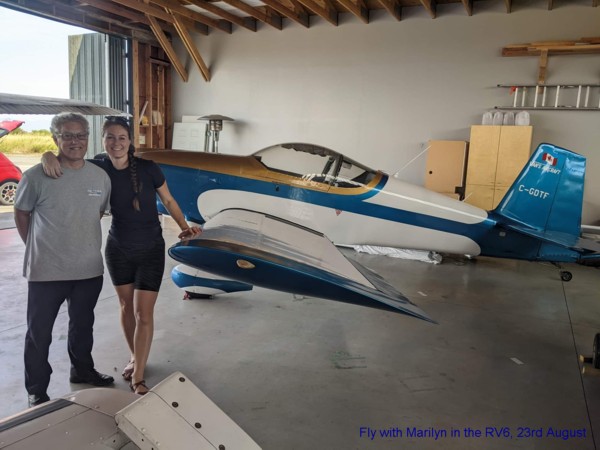
The objective was to do some aileron rolls.
I asked Marilyne what entry speed she used? 140KIAS!
Let's do them at 120 I said, and we did... Use the right speed,
they went well.
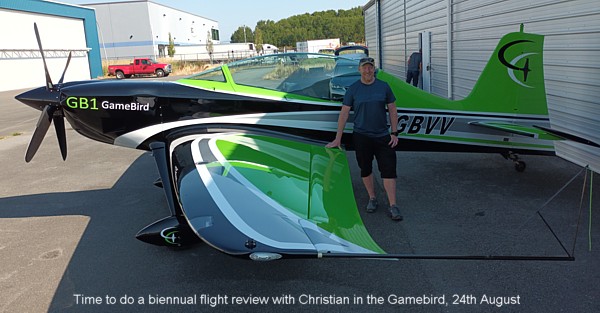
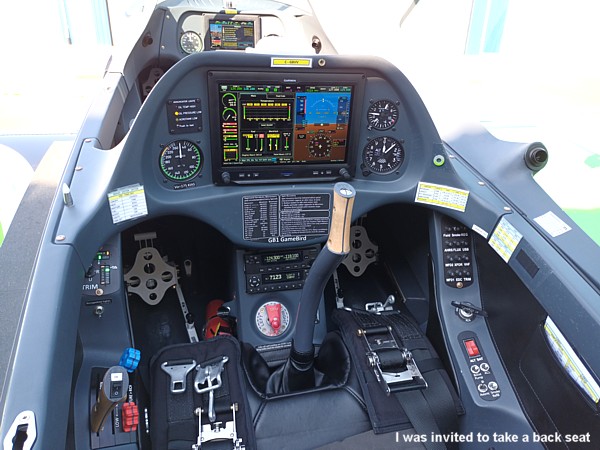
This is the third biennual flight review I have done with
Christian, this time in a Gamebird GB1
It's an easy aerobatic aeroplane, but you don't want to get it
too slow on final, my landing was alright but a little long.
I was told it would porpoise in pitch in the air when elevator
input is applied, and it did, but steady the stick firmly and
this soon stops.
We did regular air work, explored the slow flight regime, and
tight turns on the edge of buffet at times.
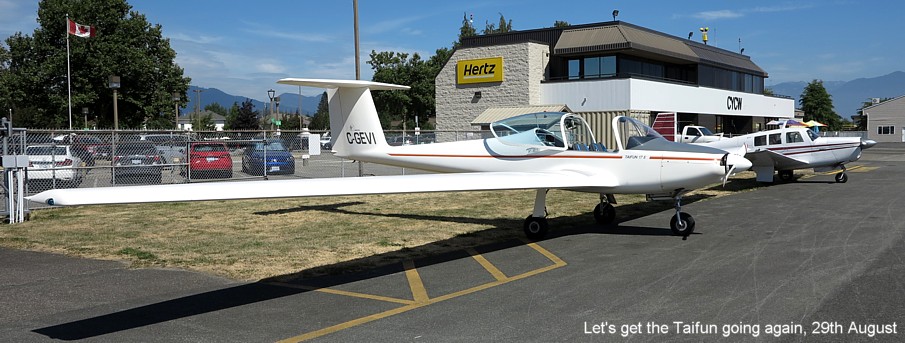
When my PPL was issued it qualified me to fly
SLMGs, Self Launching Motor Gliders, and many of these are dubbed
TMGs, Touring Motor Gliders now.
I used to fly a Fournier RF4D motor glider when I was a member of
the Tiger Club, but this was removed from the fleet when the CAA
told the Tiger Club that we weren't qualified to fly it.
In Canada I am approved to fly TMGs providing I don't turn the
engine off in flight, and so far I have not done so.
The Taifun had not flown for 13 months and so I flew with Daryl
to bring him back up to speed, and to check that all was well
with the aeroplane.
At Chilliwack the nose leg was a little low and so I decided we
wouldn't do any circuits until it was better inflated.
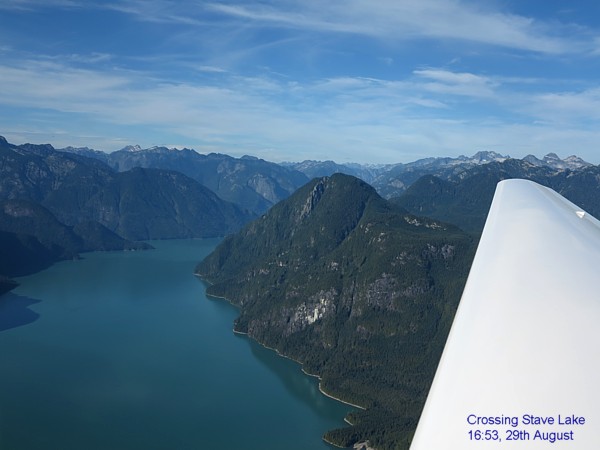
The route back was flown most of the way at idle, 1.5gph, with a
climb to 4,000 feet using the available lift.
Mountains usually provide some lift, and you must have a good
idea of your distance from the terrain beside you.
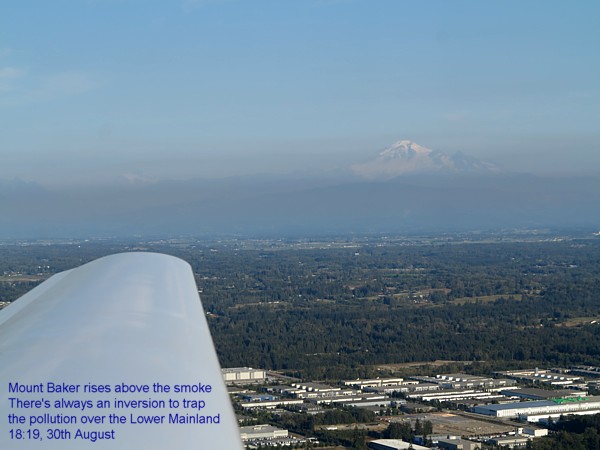
With an inflated nose leg we did a touch and go
at Pitt Meadows and a couple of circuits back at Boundary Bay.
'Lands nicely with the spoilers in and a touch of power.
Use the spoilers to get down, then retract them to land (full
flap 30 degrees), and then apply the spoilers to slow down. The
wheel brakes come on with full movement of the spoiler lever.
There's a Taifun in need of repair at Ringmer...